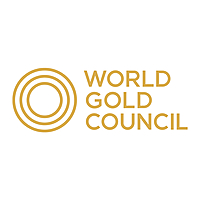Gold hits US$4,000/oz – trend or turning point?
The comparison to gold’s move in the late 1970s has generated a lot of buzz as investors assess whether this most recent leg up is signalling a continuation of the trend or the start of a reversal.
And it’s not just gold’s performance in a single year, but the length and underlying drivers of a bull run that should be the centre of attention. For example, gold’s recent run remains below the average duration and magnitude of previous bull runs (Chart 2).
What is driving gold’s move?
Our analysis suggests that this year’s rally has been fuelled by increased investment demand, led by the West, as investors worldwide seek a safe haven amid geopolitical tensions, dollar weakness, expectations of further Fed cuts, and fears of an equity market correction.
Continued central bank buying has helped too, both in driving offtake but also cementing the positive narrative.
Nevertheless, that leaves many asking: how much room is left to run?
The most recent run for gold ETFs began in May 2024: 74 weeks in, holdings are up 788t and net longs have increased by just 116t. Compared to the averages of prior runs, this represents only 30%–40% of the total.
As gold tests whether US$4,000/oz is a key level of support or resistance, it could face several tactical challenges. Short- term dynamics could introduce volatility and potential profit taking. For example:
- Gold allocations nearing targets may prompt portfolio rebalancing by strategic investors
- Technical indicators for gold – RSI above 90 and prices more than 20% above their 200-day average – suggest an overbought market that may lead short-term investors to position for a reversal
- Tighter credit conditions could trigger liquidation of high-performing assets like gold as investors search for cash
- A sharp dollar short squeeze remains a threat despite recent investor resilience
- The rapid gold price increase will likely dampen consumer demand during an otherwise strong seasonal period
- A resolution of geoeconomic risks could shift capital to risk on assets.
- a broader investor base: growth in low-cost ETFs, 1oz COMEX futures, and regulatory shifts in China and India opening the door to institutional strategic allocations
- secular US dollar weakness encourages foreign hedging and potential rotation out of US assets
- persistent US policy uncertainty and rising geopolitical tensions2
- inflation and labour market weakness could increase the risk of a recession.
In summary
Gold marked a new milestone as it reached US$4,000/oz. Its future path will depend on how investors respond to tactical and fundamental factors. In our view, comparisons to 1979 are enticing but misleading.
There are reasons to believe that gold’s run has not run out of steam, especially in the broader macroeconomic context. For example: high real rates that are likely coming down, tight credit spreads that can widen, lofty stock markets that can easily correct, among others (Table 2).
In our view, gold’s strategic strengths continue to balance the tactical risks as this new stage unfolds.
World Gold Council
We are a membership organisation that champions the role gold plays as a strategic asset. Our team of experts build an understanding of the use case and possibilities of gold through trusted research, analysis, commentary and insights.
3 topics

